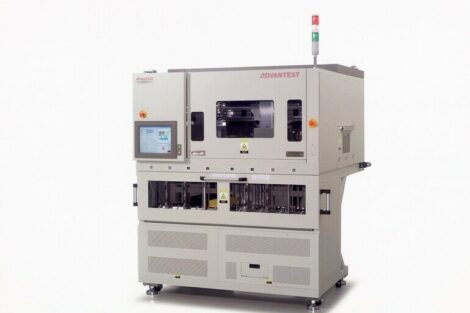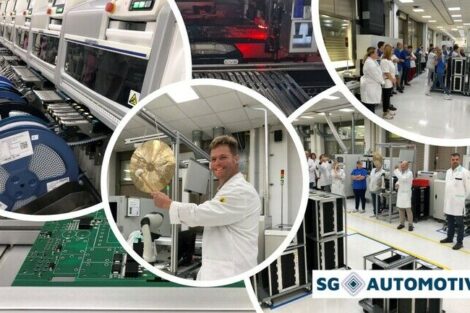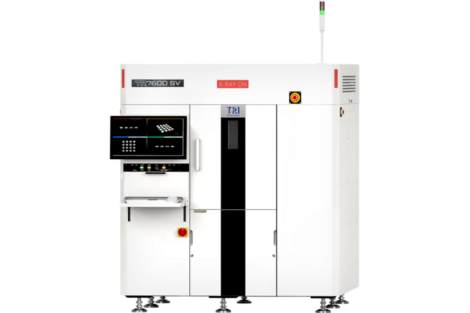In this Interview, Bob Stasonis, Marketing, Pickering Interfaces, explains some of the testing challenges and shows where the company has helped the automotive industry address the challenges. I think it is no surprise to anyone that the automotive industry is one of the most innovative areas of manufacturing in the world. Be it finding a way to create a low cost vehicle for emerging nations to designing autonomous vehicles, the automotive industry continues to add new features and enhancements to their products. As much is this new innovation is based on electronics, the issue of testing and verifying new designs and building fast and accurate production test systems creates new opportunities for the test and measurement industry.
Electronic complexity in automobiles has increased rapidly. Is Pickering encountering increasing challenges in testing these automotive electronic systems?
At Pickering, we have been following these increased challenges for quite some time. Since 1988, we have been designing and manufacturing commercial and custom switching systems, as well as instrumentation, for automotive test applications ranging from simple body controllers to active safety and infotainment systems. Our customers consult with us regularly as new challenges arise.
Why are automotive companies turning to you and what are the reasons for their decisions?
Our capabilities, expertise, product breadth, and our ability to react quickly are the reasons why major automotive companies including TRW, Delphi, Lear, BMW, Tesla, Caterpillar, Magneti Marelli, Robert Bosch, Renault, Peugeot, Siemens, Continental Automotive, Johnson Controls and many more specify our PXI, PCI and LXI products for automotive functional test.
Do you offer specialized solutions for the automotive industry?
We have developed a number of modules optimized for the automotive electronics industry, but many of these solutions are also suited for a variety of applications where electronic assemblies and their faults are required to be simulated. Automotive applications have many things in common with other safety sensitive systems with increasing electronic content that requires testing.
You are best known for your switching solutions. What other products do you offer besides this?
As I stated earlier, we are primarily focused on the switching requirements for test systems, with over 1,000 modules in PXI alone. Besides switching, we have also introduced a number of products that support simulation of various signals and sensor types. We offer a range of resistor simulators, digital I/O, amplifiers, attenuators, power sources and a waveform generator.
Can you name and describe those solutions briefly?
Resistor simulators are used to emulate sensors, such as temperature sensors and strain gauges that are used in automotive systems. Digital I/O are used to emulate the signals from other assemblies such as power window switches and other body controller functions. Amplifiers and attenuators are used to condition the signals generated so they reflect the levels created or used by electronic assemblies – in addition, our attenuator modules can condition a signal so that it can be captured by the available instrumentation. Power sources (including battery simulators) can allow users to create self-contained test systems without a need for traditional bench products.
What about supporting tools?
Clients can use our supporting cables & connectors – From simple mating connectors through to complex cables assemblies and terminal blocks, including custom cable requirements which support all of our catalog of products. In addition, our software drivers allow the test engineer to use our products in virtually any test program environment. Finally, for complex switching requirements, we have an automated switch routing software package called TECAP Switching.
What are the user benefits of Hardware-in-the-Loop Simulation or HILS?
HILS can be used to simulate the reaction of an ECU to external fault conditions such as a broken wire or a faulty temperature sensor, giving you the power to thoroughly test the ECU in a virtual environment before proceeding to production level testing. Using HILS, all possible electrical short and open circuits are simulated, erroneous sensor data is applied and the ECU reaction captured to see if the design works as defined.
Especially in the area of safety systems, how an ECU “limps along” when a fault occurs is equally important as normal operations. You can achieve greater reliability in a cost effective manner no matter how complex the system being tested has become.
Our HILS products include break-out systems, fault insertion switches and sensor e, including HILS support for high-speed serial interface applications including Ethernet and CAN. We offer by far the widest range of Fault Insertion and resistor modules solutions available.
What kind of signal-switching modules do you offer?
Whether you are testing low-frequency audio channels, Spark Coil Firing Patterns, or the latest RF communication connections —we offer signal-switching modules that address each application. SPST relays, multi-pole multiplexers or cross-point matrices are available with voltages up to 1000 VDC and bandwidths up to 65 GHz.
What if signals to simulate peripherals are at the incorrect level for proper operation?
Some PXI instruments lack the range needed to generate or capture signals required to test ECUs. For example, signal or arbitrary waveform generators lack the amplitude necessary to drive signals that simulate peripherals, such as camshaft and ABS wheel sensors, and digitizers cannot adequately capture the primary signal of a spark plug coil during discharge.
Our high voltage amplifier (41–650) features multi-channel, gain selectable amplifiers that work with many instruments including our function generator (41–620). Our high voltage attenuator (41–660) features selectable input ranges that accept up to 600 volt waveforms.
The testing of ECUs such as body controllers, ABS, electric power steering and transmission control requires the connection of high current loads to the Unit Under Test (UUT). Do you offer products addressing this issue?
We provide a wide range of PXI switch modules that can support up to 40 Amp load switching within the PXI chassis. We also offer solid state switch solutions up to 40A which can switch DC signals at high current with no lifetime degradation – a significant problem for EMR based solutions. Our LXI matrix (60–600) can switch 10 Amps across up to 64 channels.
For higher current requirements, our relay driver modules (40–410, 411, 412) let the test system control relays that are not easily supported within the PXI chassis.
How would you describe future developments and what is your philosophy behind them?
We are continually expanding our range of switching products—because when it comes to test, our customers care about breadth of choice. Our philosophy of being responsive to the changing requirements of our customers have earned us a reputation for creating new designs as the industry needs them.
In order for test engineers to balance their budget with the specified testing requirements, they need choices—in other words, just enough of the correct switching for their application. Our philosophy has always been to offer the right amount of switching, with the required performance, at the right cost no matter what the application may be.
With automotive solutions being so different, do you offer any kind of customization to address the relevant switching requirements?
Our business model is to create new designs that can be used by any company in the appropriate technology space. To the customer, this means that we can design new products for a lower commitment in terms of dollars and number of units, and with little NRE charges.
In order to easily deliver these products, all module and cabling manufacturing processes are done within our two factories on flexible manufacturing lines allowing us to offer simple customization to meet our customers’ needs. No matter what the test platform, we can provide a cost-effective solution for your switching requirements. We are also the only switching system provider with in-house reed relay manufacturing capability.
What other industries besides automotive does Pickering support and where are offices located?
Besides automotive Pickering serves many industries including, aerospace & defense, power generation, energy and commercial electronics.
How would you describe supporting test systems with a long deployment life?
Many of our customers expect their test systems to last at least as long as the products being tested. We understand this need and pride ourselves on the fact that all of our critical components, software and cabling designs as well as our manufacturing processes are carried out in-house. These capabilities enable us to provide our customers with guaranteed long-term support and low obsolescence.
Can you give us some more details regarding your support philosophy?
We strive to support our customer’s needs long-term by supporting our manufactured products for 15–20 years from date of delivery. Also we are continually updating our product lines, so even if a product happens to become obsolete, we will endeavor to provide an improved version. Furthermore we are manufacturing older revision products to special order for compatibility purposes.
If we can’t manufacture the identical product—we will work to offer a form, fit and function alternative. Of course we are servicing and repairing all of our products, even if discontinued.
Software plays an important role in all industries especially automotive. What is so special about Pickering in terms of software?
Pickering is committed to providing open software development interfaces that will maximize our customer’s choice in application development environments. We provide kernel, IVI and VISA (NI and Keysight (Agilent)) drivers that are compatible with 32/64-bit versions of popular Windows operating systems, as well as most versions of LINUX. Our VISA driver is also compatible with Real-Time Operating Systems such as LabVIEW RT.
What operating systems do your drivers work under?
These drivers may be used with a variety of programming environments and applications including: National Instruments products (LabVIEW, LabWindows/ CVI, Switch Executive, MAX, NI TestStand, etc.), Microsoft Visual Studio products (Visual Basic, Visual C+), Keysight (Agilent) VEE, Mathworks Matlab, Marvin ATEasy and Pickering’s TECAP Switching.
Share:










